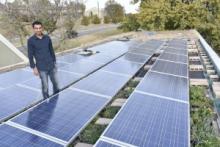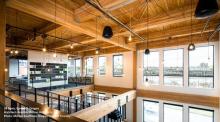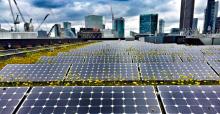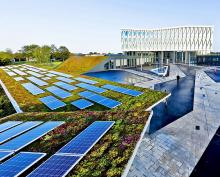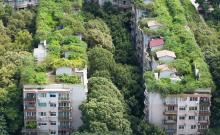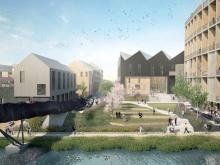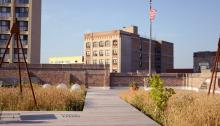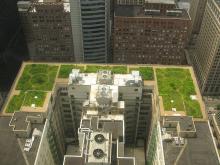Conducting a study and field experiments, a doctoral student in the School of Architecture and Design at the University of Kansas (KU) shows that PV panels installed over a green roof perform an average of 1.5% better, compared with panels over highly reflective or black surfaces.
International News
China will plant new forests covering an area roughly the size of Ireland this year as it aims to increase forest coverage to 23 percent of its total landmass by the end of the decade, China Daily reported on Friday.
Planting trees has become a key part of China’s efforts to improve its environment and tackle climate change, and the government has pledged to raise total coverage from 21.7 percent to 23 percent over the 2016-2020 period, said the China Daily, citing the country’s top forestry official.
With research showing the average North American spends 90 percent of their time indoors, Think Wood advocates for the design of our buildings—particularly office spaces—to promote productivity, functionality, creativity and occupant wellbeing. Uses of wood as a structural or finishing material not only offer aesthetic beauty, but enhances indoor air quality, acoustics, thermal comfort, and energy efficiency. Perhaps most notably, it also has biophilic benefits—the innate wellness humans feel towards nature.
In times of booming urbanization, space in our cities is increasingly at a premium; yet, there exist acres of underutilized realty all around us…
Global warming is constantly looming over humanity like a dark cloud drawing ever closer. Though the push for renewable energy has gathered steam in the last 20 years, we are still a long way from detaching ourselves from fossil fuels.
Green infrastructure that is in sync with nature can provide useful sustainable development solutions, but it’s not yet a part of core urban infrastructure planning processes, says ADB expert Sonia Chand Sandhu.
While a lot of focus on rooftop climate change measures is on solar panels, there’s another method that’s even greener – at least in the literal sense. Roofs covered in plants aren’t just aesthetically attractive – they also help to insulate buildings, slashing energy costs (both heating and air conditioning) by around 25 percent.
While there’s a (mostly) global consensus on the need to address climate change at the state level, municipal solutions to improving energy efficiency seem to be governed not by orthodoxy but by experimentation. To that end, one neighborhood in the northern English city of Leeds is moving toward a sustainable future with a little help from Nordic experts. Envisioned as a collaborative project between Sweden’s White Arkitekter and environmentally conscious U.K. development firm Citu, Leeds’s dedicated “Climate Innovation District” will repurpose an old industrial brownfield to create a green, open community centered around 500 of the most energy-efficient apartments and homes you’ll find anywhere on the planet.
When it comes to green infrastructure practice, there isn’t much Molly Meyer, GRP, LEED GA hasn’t done. A quick scan of her resume leaves no doubt as to why she succeeds as the CEO and Founder of Omni Ecosystems, a company specialized in bringing life to built environments. Meyer is particularly well trained in the realm of green roof design becoming an accredited Green Roof Professional in 2009, and through Omni, has brought innovative products to a flourishing green roof market. As an increasing amount of cities around North America begin to recognize green roof benefits trough legislation and incentives, Meyer’s skills and vision are remarkably well-timed.
Spring and summer 2017 have been among the wettest on record in eastern North America. And the world is still watching Houston, where Hurricane Harvey caused devastating flooding.
Rainfall amounts in the spring broke records in places like Toronto, where 44.6 millimetres of rain fell in 24 hours. The downpours earlier this spring caused the stormwater infrastructure in Canada’s biggest city to overflow, leading to flooding of busy downtown streets.

